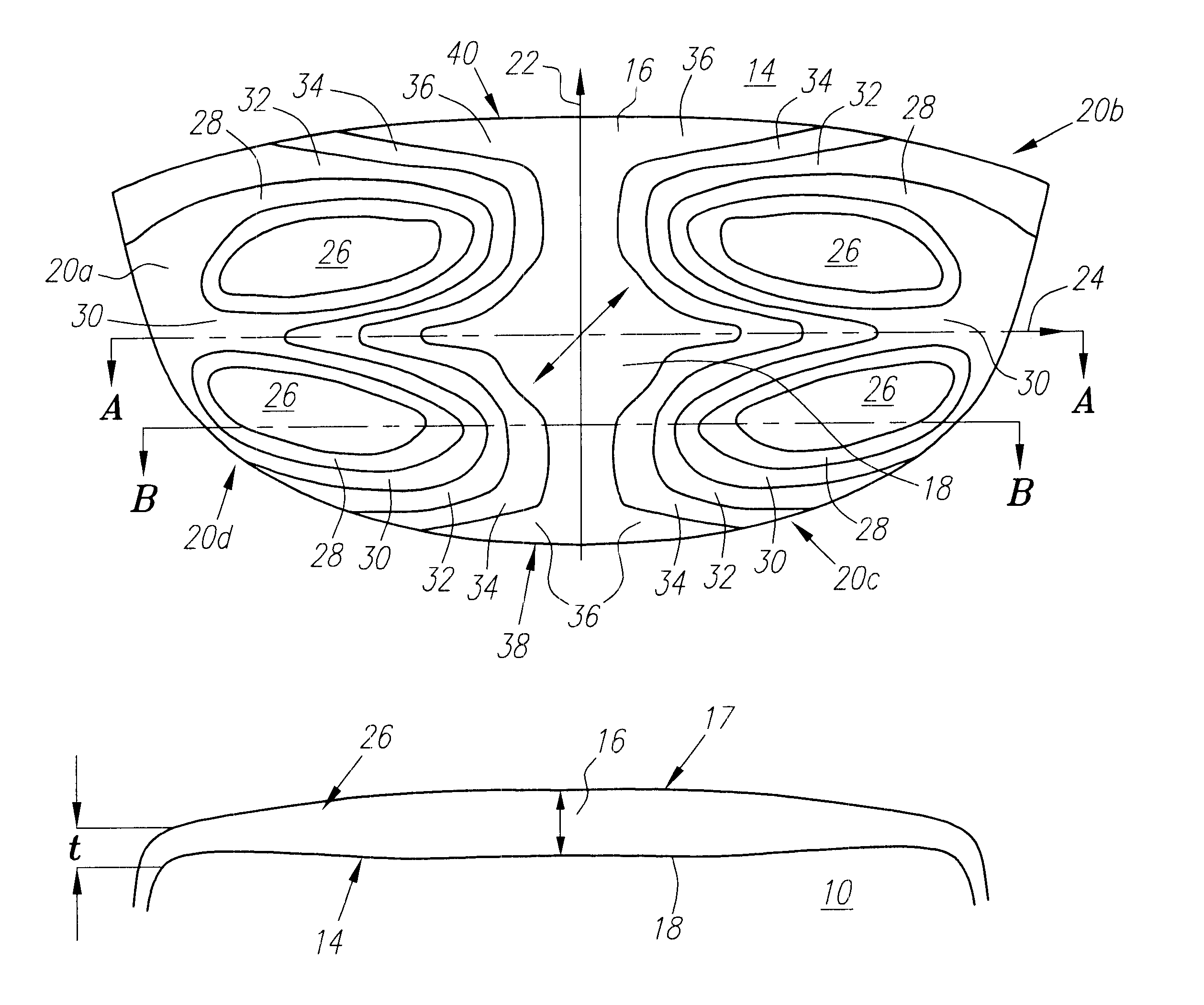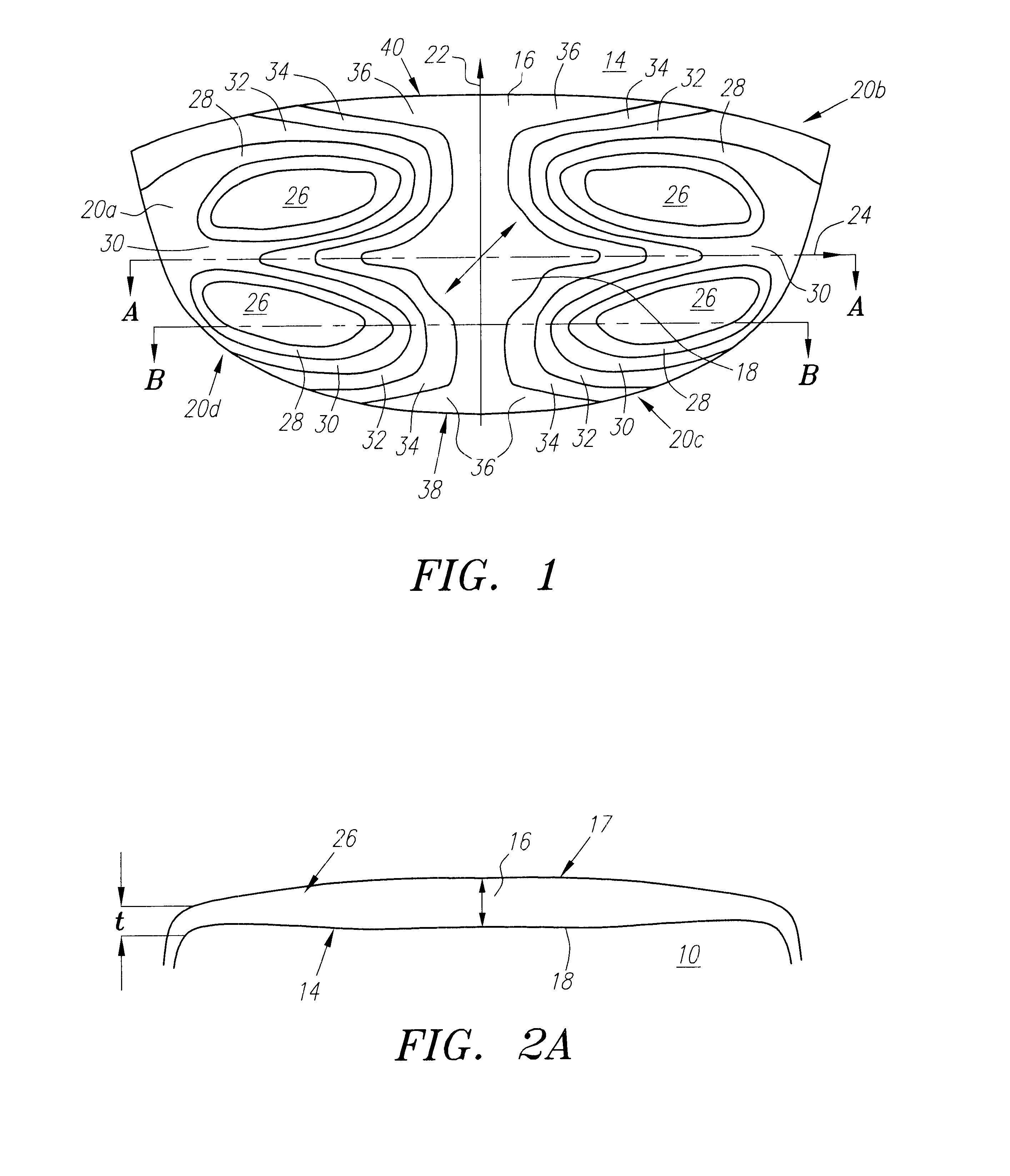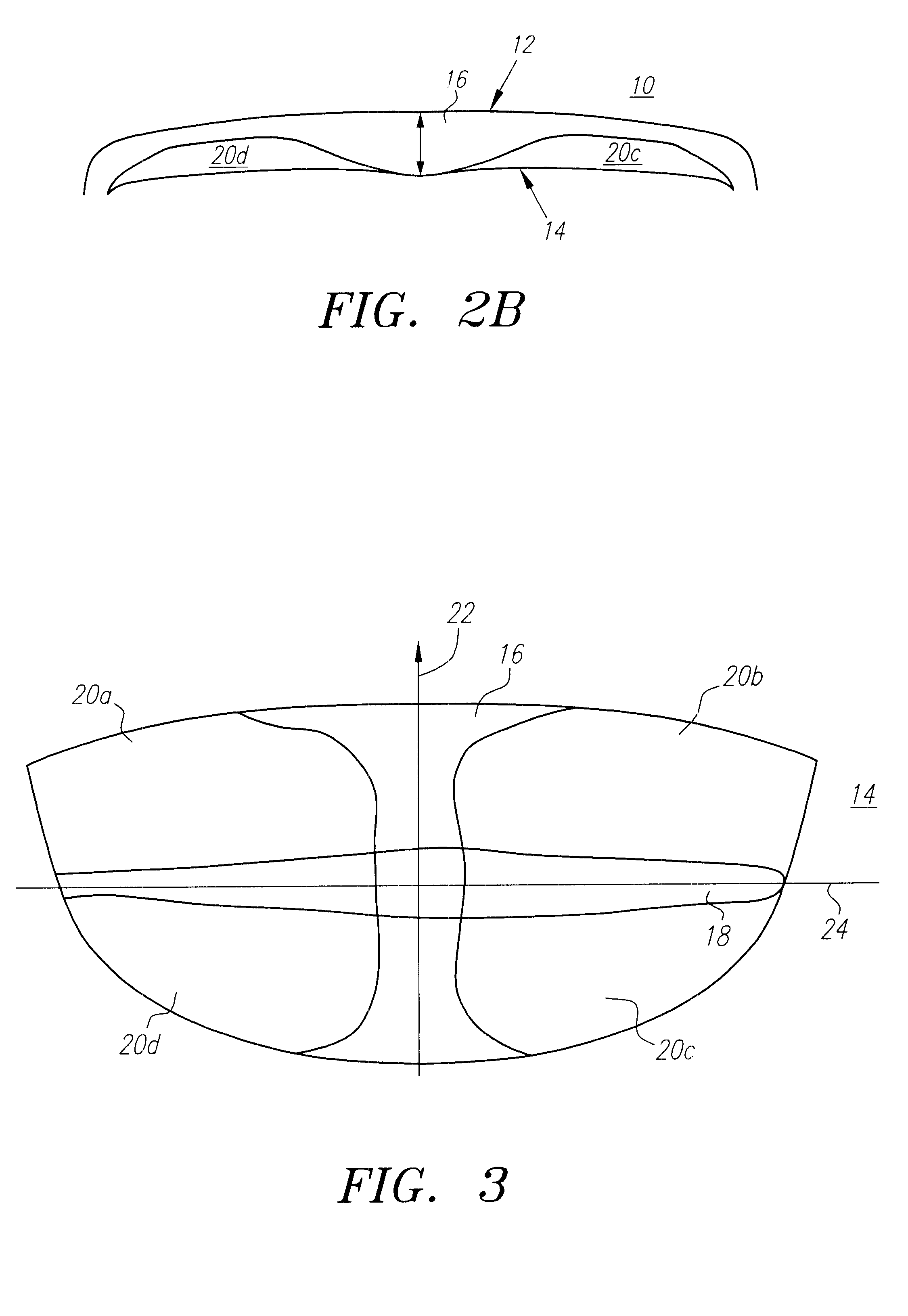Contoured golf club face
- Summary
- Abstract
- Description
- Claims
- Application Information
AI Technical Summary
Benefits of technology
Problems solved by technology
Method used
Image
Examples
Embodiment Construction
As is described above and shown in FIGS. 1-3, a golf club face 10 of the present invention comprises a substantially smooth front hitting surface 12 (shown in FIGS. 2A and 2B only), which may include score-lines (not shown), and a contoured back surface 14 which preferably comprises a vertical stiffening region 16 and a horizontal stiffening region 18 which together define four quadrants (or contoured regions) 20a-d on the face back surface 14.
As is shown in FIG. 1, the vertical stiffening region 16 preferably is generally located substantially along a vertical central axis 22 of the back surface 14 and has a certain preferable thickness T (shown in FIGS. 2A and 2B). The horizontal stiffening region 18 preferably is generally located along a horizontal central axis 24 of the back surface 14 (shown in FIG. 1) and has a certain preferable thickness T which preferably tapers to a thickness t toward extremities of the axis 24 (shown in FIG. 2A).
As is also shown in FIG. 1, the four quadr...
PUM
 Login to View More
Login to View More Abstract
Description
Claims
Application Information
 Login to View More
Login to View More - R&D
- Intellectual Property
- Life Sciences
- Materials
- Tech Scout
- Unparalleled Data Quality
- Higher Quality Content
- 60% Fewer Hallucinations
Browse by: Latest US Patents, China's latest patents, Technical Efficacy Thesaurus, Application Domain, Technology Topic, Popular Technical Reports.
© 2025 PatSnap. All rights reserved.Legal|Privacy policy|Modern Slavery Act Transparency Statement|Sitemap|About US| Contact US: help@patsnap.com



